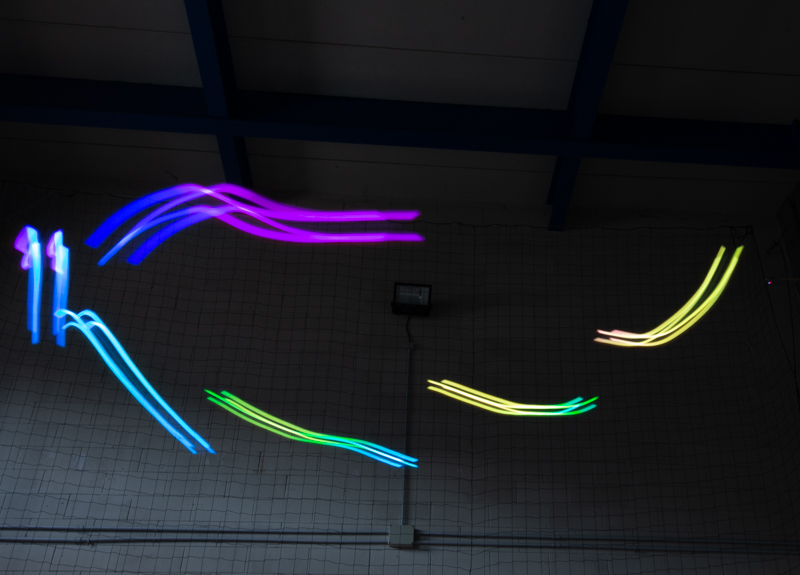Guest Lecture at Linz Art University’s Interface Culture
On December 3, 2019, at the Linz University of Art, the Master Program Interface Cultures invited our Creative R&D Director Giorgio Rinolfi to hold a conference in the context of the INVITED CULTURE READING SERIES:
Aerial Media Arts and LuminousBees, an Open Source robotic swarm ecosystem for public Arts
The development of the services and applications in the shared airspace and the lack of awareness in terms of its potential community use, has started the creation of “Aerial Media Arts”. Ongoing research has in “swarm robotics” the main tool for artistic investigation, performance and dataset visualization for the community.

This lecture will give you an overview on the state of the current UAVs (unmanned aerial vehicles) research. From the traditional aircraft models to the drones and hybrid VTOL system, the autonomous ability has always been required.
Luminousbees is a platform for research and creative applications with swarm of MAV (Micro Air Vehicles). It’s based on the open-source project Ardupilot, the most advanced, full-featured and reliable open source autopilot software available. It is the only autopilot software capable of controlling any vehicle system imaginable, from conventional airplanes, multirotors, and helicopters, to boats and even submarines.
Humans have always been fascinated with natural swarms, remarkable examples of social organisms that rely upon the mutual coexistence of a multitude of simple elements each one assigned with different functions. Swarm Intelligence is a recent scientific area that take inspiration from the behaviors of living beings and aims to transfer the laws that govern the collective behavior to multi-agents’ hardware and software systems or platforms. The application of swarm intelligence to flying robotics allows to provide them with the ability of self-organization based on some input.
Aerial Media Art (AMA) is a novel form of visual language that aims at exploits the air volume surrounding the audience as a 3D performative media space through a swarm of luminous drones. By using the air volume as the stage, the audience is surrounded by and immersed in the performance in a multi-angle fashion, where each participant has his own point of view. This approach is an effective way to drive participants into the human and machine issue in a personalized way.

Leave a Comment